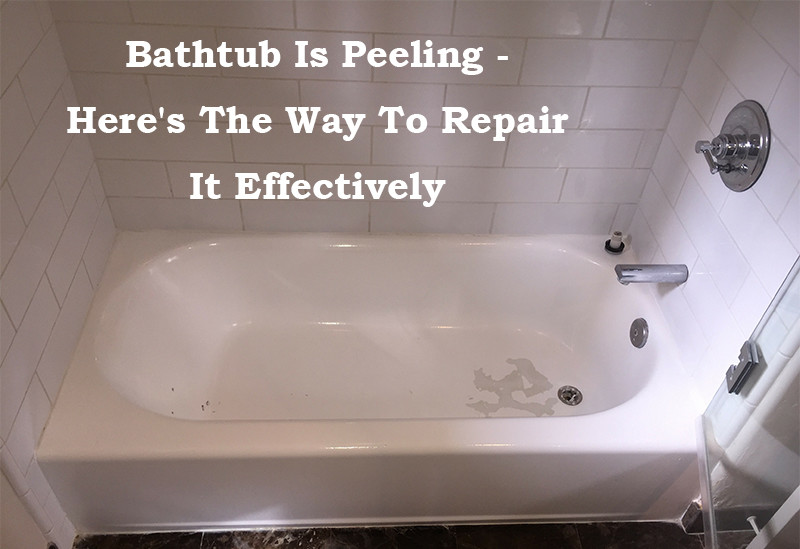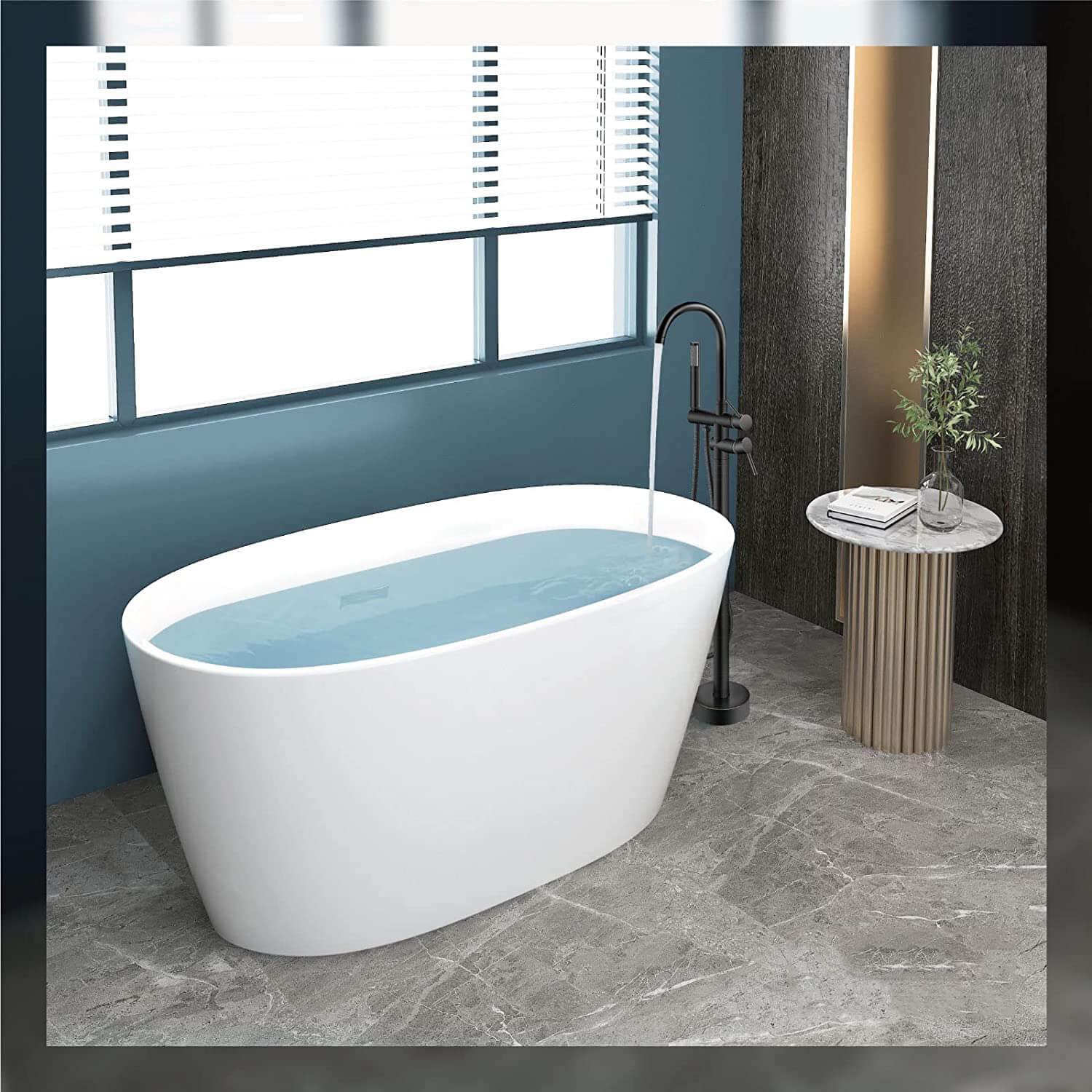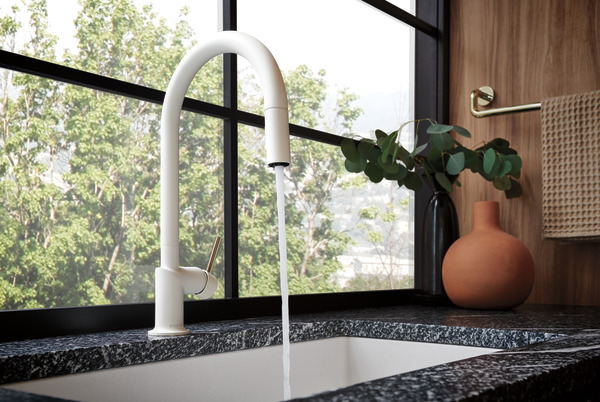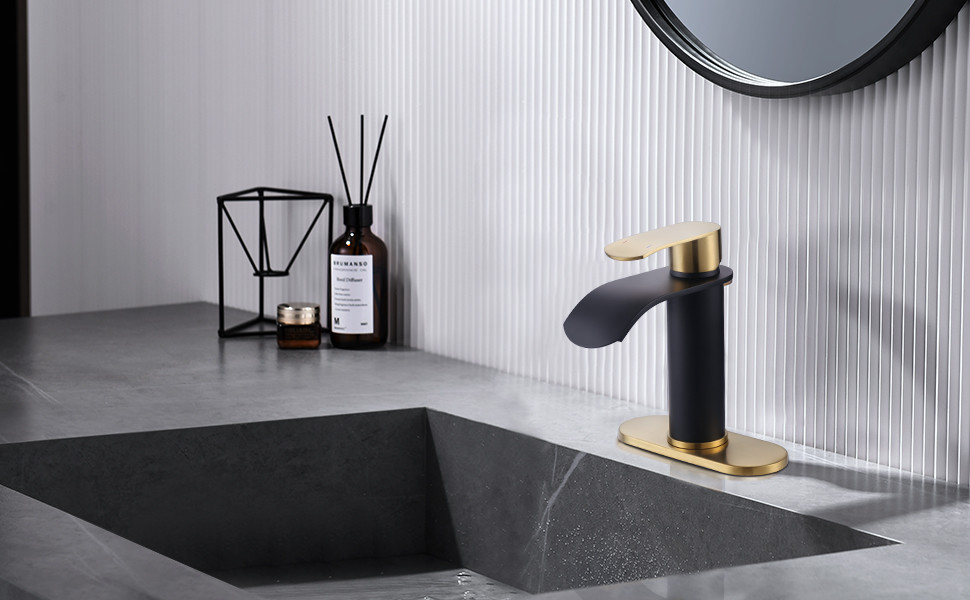
A peeling bathtub can turn a once luxurious space into an eyesore, diminishing the aesthetic appeal of your bathroom. Before succumbing to the notion of a costly replacement, it’s essential to explore effective ways to repair and revive your bathtub. In this guide, we’ll delve into the reason why bathtub is peeling and provide step-by-step solutions to restore its beauty and functionality.
Section 1: Understanding the Causes of Bathtub Peeling
- Surface Damage and Wear: Over time, bathtubs are subjected to wear and tear, including exposure to cleaning chemicals, abrasive scrubbing, and constant water contact. This can lead to surface damage, causing the coating or finish to peel.
- Inadequate Surface Preparation: Improper surface preparation during the initial installation or refinishing process can contribute to peeling. Inadequate bonding between the substrate and the coating can result in premature deterioration.
- Moisture and Humidity: High levels of moisture and humidity in bathrooms create an environment conducive to peeling. Constant exposure to water, coupled with inadequate ventilation, can compromise the integrity of the bathtub’s surface.
Section 2: Assessing the Extent of Damage
- Inspecting the Peeling Areas: Before initiating repairs, thoroughly inspect the peeling areas to determine the extent of the damage. Identify whether the peeling is localized or widespread and assess if there are any underlying issues contributing to the problem.
- Checking for Mold or Mildew: Peeling areas are susceptible to mold and mildew growth. Check for any signs of these issues, as they need to be addressed before proceeding with repairs. Mold and mildew can be indicative of water infiltration, which must be resolved to prevent future peeling.
Section 3: DIY Solutions for Bathtub Repair
1. Clean and Prep the Surface:
- Begin by thoroughly cleaning the bathtub surface. Remove any soap scum, debris, or loose paint using a non-abrasive cleaner. Rinse the bathtub and let it dry completely.
- Sand the peeling areas with fine-grit sandpaper to create a smooth surface for repairs. Wipe away any dust with a clean, damp cloth.
2. Patching and Filling:
- For small areas of peeling, use a bathtub repair kit or epoxy filler to patch and fill the damaged sections. Follow the manufacturer’s instructions for application and drying times.
- For larger areas, consider using a fiberglass repair kit. Cut the fiberglass mesh to fit the damaged area, apply resin, and press the mesh onto the surface. Repeat the process, layering the mesh and resin until the damaged area is reinforced.
3. Sanding and Smoothing:
- Once the filler or patch material has dried, sand the repaired areas with progressively finer sandpaper to achieve a smooth and even surface. Aim for a seamless transition between the repaired sections and the original bathtub surface.
4. Primer and Paint:
- Apply a high-quality bonding primer to the repaired areas. This ensures proper adhesion of the new finish. Allow the primer to dry according to the manufacturer’s instructions.
- Choose a bathtub-specific enamel paint in a color that matches the existing finish. Apply the paint evenly, using a high-quality brush or a paint sprayer for a professional-looking finish.
Section 4: Seeking Professional Assistance

When to Call a Professional:
- If the bathtub damage is extensive or involves structural issues, it’s advisable to seek professional assistance. A licensed plumber or bathtub refinishing expert can assess the situation and recommend the best course of action.
Professional Refinishing Services:
- Consider professional bathtub refinishing services as an alternative to DIY repairs. Professionals use specialized coatings and techniques to refinish bathtubs, providing a durable and long-lasting solution. This option is particularly beneficial for older bathtubs with multiple layers of peeling and wear.
Section 5: Preventive Measures for Long-Term Maintenance
Proper Ventilation:
- Ensure adequate ventilation in the bathroom to reduce moisture and humidity levels. Use exhaust fans during and after bathing to promote air circulation.
Regular Cleaning and Maintenance:
- Implement a regular cleaning routine using non-abrasive cleaners to prevent soap scum and debris buildup. Avoid harsh chemicals that can damage the bathtub finish.
Softening Water:
- Consider installing a water softener if your water supply is hard. Hard water can contribute to mineral deposits on the bathtub surface, leading to damage over time.
Conclusion: Bathtub Is Peeling
Repairing a peeling bathtub is a feasible undertaking that can breathe new life into your bathroom without the need for an expensive replacement. By understanding the causes of peeling, assessing the extent of damage, and implementing effective repair strategies, you can restore your bathtub’s elegance and functionality. Whether opting for a DIY approach or seeking professional assistance, the key lies in addressing the issue promptly and taking preventive measures for long-term maintenance. With the right techniques and a commitment to maintenance, your bathtub can once again become a centerpiece of relaxation and beauty in your home.
 WOWOW Faucets
WOWOW Faucets





您好!Please sign in